Southwest Michigan field crops update – May 19, 2022
Significant planting progress was made this past week in corn and soybean, but rain forecasted for the coming week will likely put the brakes on forward progress.

Weather
Temperatures were 9-11 degrees above normal this past week with numerous records being set across the upper Midwest. This unseasonably warm blast took us from being a few days behind in heat units to a few days ahead in just one week, something that Michigan State University state climatologist Jeff Andresen says is extremely rare. Evapotranspiration rates were high this past week even compared with those typically seen in mid-summer and soils have dried out significantly. The forecasted reference evapotranspiration (FRET) rate for this coming week will be less than last week at 1.1 in. with daily rates of 0.25 in. on Friday followed by 0.13-0.15 thereafter. The medium-range forecast calls for below-normal temperatures giving way to above-normal temperatures by the first of June.

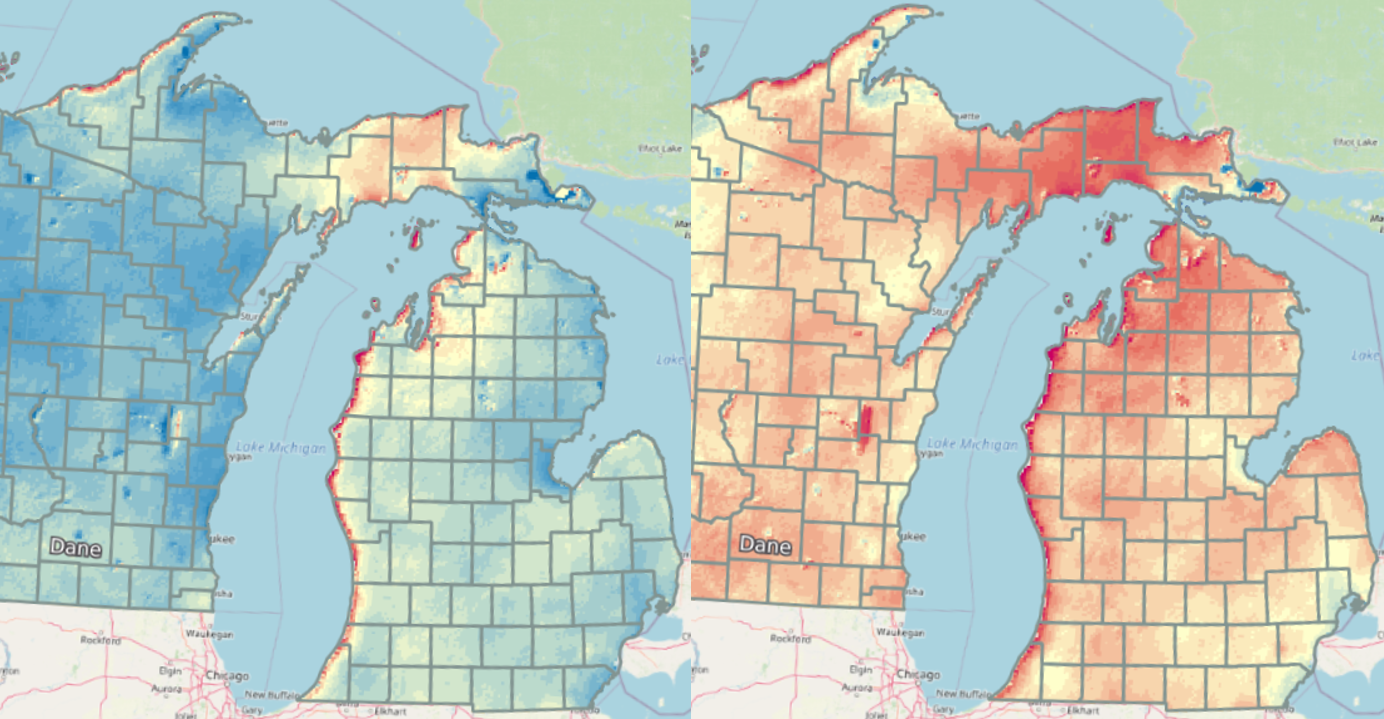
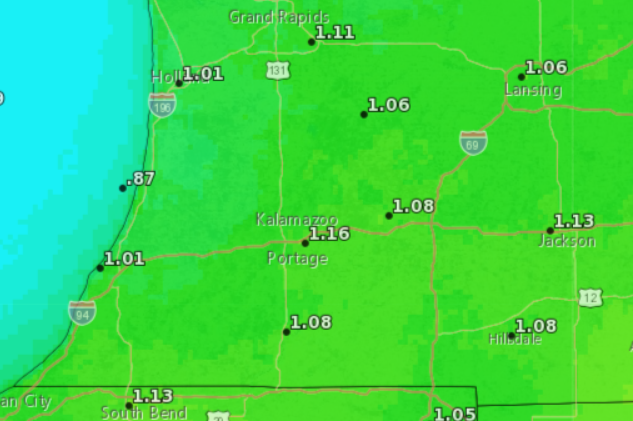
Precipitation this past week was 0.25-1.0 inches throughout the region. The light showers that came through on Wednesday brought totals of 0.1-0.5 inches, which stopped most field work for the day. The forecast for the coming week does not bode well for making progress with planting with predicted totals between 1.5 to over 2.5 inches. Over an inch of that is predicted to fall Saturday into Sunday with the next strong chance of rain coming next Wednesday. The medium-range outlooks both call for above-normal chances of rain as we head into June.

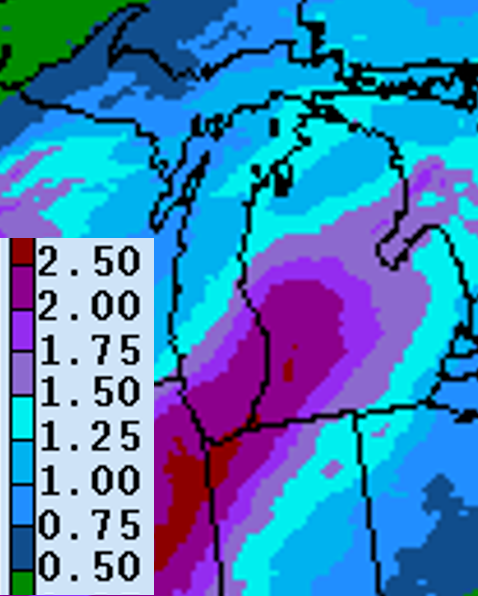
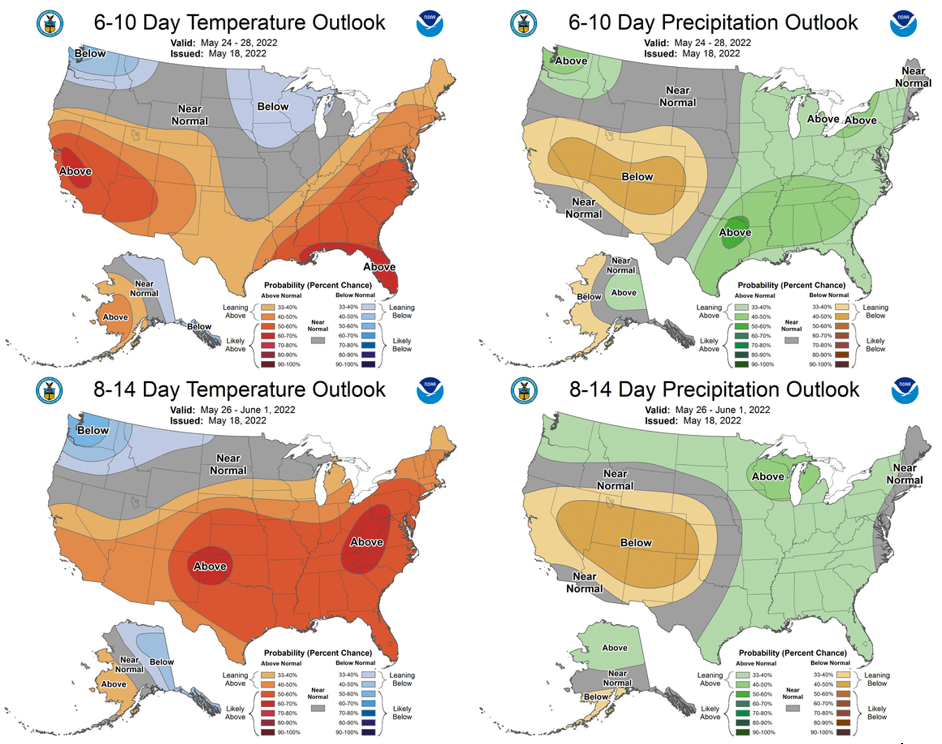
Crops and pests
Wheat in Michigan was rated at 49% good to excellent—that number has been slowly climbing this spring—with an additional 35% rated fair. Fields I have visited would be in the good to excellent category and had developed the third visible node with an emerged flag leaf earlier this week. According to the USDA Crop Progress report from last week, 1% of wheat in the state had reached heading…that is a crazy amount of development in this past week. The flag leaf should be fully emerged in most fields by the end of the coming week. Michigan State University Extension field crop pathologist Marty Chilvers says that disease risk is low at this point, and he recommends waiting for a fungicide application until beginning flowering (Feekes 10.5.1) to protect against head scab rather than making a separate application to protect the flag leaf.
Forages. MSU Extension forage specialist Kim Cassida says there has been a surge in alfalfa growth similar to wheat, but first cutting will likely still be delayed this year. Alfalfa weevils have not been observed yet which is a little unusual (but good) for this time of year. For those who have patches of alfalfa that had winterkill from ice sheeting/drowning and who are looking for quality forage to feed out this year, she recommends overseeding an annual such as Italian ryegrass. However, you would need to wait until after first cutting—not optimal timing but will avoid traffic damage to the surrounding crop.
Corn and soybean planting increased significantly since last week as expected with 31% and 32% of corn and soybean in the state, respectively, planted to date. That means roughly 25% of each crop got planted in the week ending May 15th. Though we are only half as far along as we were last year, we have reached the 5-year average in soybean and are only 10% behind average in corn. That is fairly impressive given the weather we’ve had this spring with average soil temperatures staying above 50 degrees only since the first week of May and nearly constant wet conditions since March. It has also been an unusually cloudy spring so far, even for Michigan, so it has taken soils a while to dry out.
Early-planted corn was spiking late last week, and soybean have just cracked the surface in some fields. Both crops require roughly 100-120 GDD50 (differences exist among hybrids/varieties), and we should accumulate that many heat units in the next 7-14 days given the current forecast.

Insects. Moth trap counts in the region this past week were once again unimpressive, although reports from mid-Michigan show higher counts for black cutworm (BCW). Catches for BCW were similar in Elkhart County but did not drop off in other northern counties (LaPorte, Lake, St. Joseph, Whitley) in Purdue’s trapping network. Counts for true armyworm (TAW) have remained low throughout Michigan and were on par with those from the previous week in northern Indiana. MSU Extension field crop entomologist Chris DiFonzo reminded attendees on the Field Crops Virtual Breakfast this week to scout for signs of BCW cutting roughly 300 GDD50 after peak flight which appears to be the week ending May 3 so far for our region. However, with weather systems expected this coming week bringing strong southerly winds…check back next week. Side note: DiFonzo pointed out that the “high tick load” this spring is mainly due to the mild winter.
|
Moth trap counts for true armyworm (A1-4) and black cutworm (B1-3) in St. Joseph and Kalamazoo counties. |
||||||
|
12-Apr |
19-Apr |
26-Apr |
3-May |
10-May |
17-May |
|
|
A1 |
3 |
1 |
3 |
9 |
1 |
5 |
|
A2 |
0 |
0 |
5 |
4 |
0 |
4 |
|
A3 |
1 |
1 |
0 |
0 |
0 |
0 |
|
A4 |
0 |
0 |
0 |
1 |
0 |
3 |
|
B1 |
0 |
1 |
4 |
1 |
1 |
7 |
|
B2 |
0 |
0 |
4 |
30 |
1 |
1 |
|
B3 |
0 |
0 |
5 |
4 |
1 |
1 |
Sidedress corn recommendations
Sidedress corn recommendations was the topic of this week’s MSU Extension Field Crops Virtual Breakfast with field crop fertility specialist Kurt Steinke. He stressed to attendees that there is no one correct strategy to fertilize corn and that different combinations of pre-plant incorporated, at-planting, preemergence and sidedress could all be successful.
Sidedressing nitrogen (N) in corn may be most effective in wet springs, when the planting window is compressed and farmers don’t have time to apply at planting, and when weather forecasts are highly variable. We generally know what the crop and the season are going to look like better 40 days after planting than we do at planting. For example, Steinke showed results from a three-year study of N fertilization timing in corn where split applications paid off in two years when rainfall was higher than average in June (2014 and 2015) but did not result in higher yields than with a one-pass system when June was drier than normal (2016).
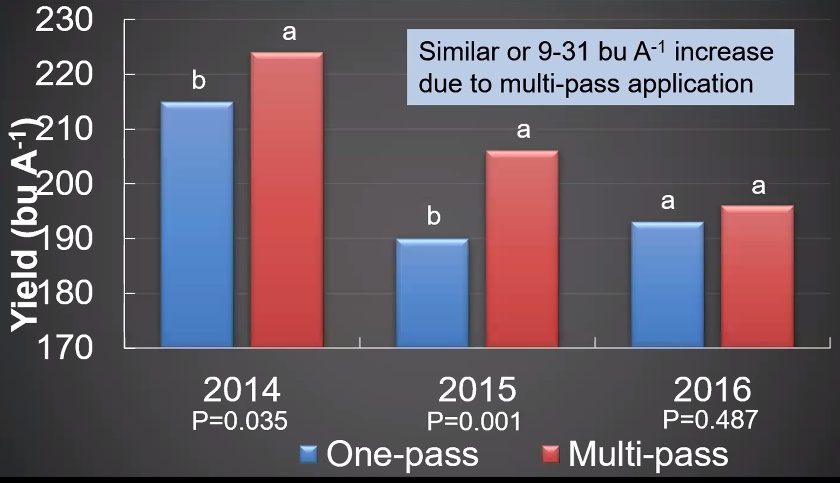
Steinke also stressed that growers have to be sure that the crop has sufficient N when it needs it, so delaying sidedress too long may result in lower yields. A corn plant takes up 10% of its N needs for the season by V6, another 18% between V6 and V10, and another 29% between V10 and V14, so waiting much beyond V10 to apply the majority of the N is not generally recommended. Although pre-plant N may be most effective in well-drained, fine-textured soils with higher soil organic matter, split-N applications will often pay off in course textured soils prone to leaching losses or poorly-drained, fine-textured soils prone to denitrification losses.
A few other recommendations given to attendees in response to questions included:
- Sulfur (S) may be best applied with N at sidedress to avoid S leaching when applied earlier
- Look for potassium deficiency symptoms (chlorotic leaf edges moving inward in the lower canopy), particularly in low test soils or dry weather
- Surface-applied N, although faster to apply, has the added risk of needing rainfall (unless you have irrigation) to incorporate to avoid volatilization losses and to get the N to the roots
- 40 lbs N in a 2x2 is not sufficient to delay sidedress applications to V11 in many soils in MI
- Consult the maximum return to nitrogen (MRTN) N rate calculator on either the Iowa state website or the MSU Soil Fertility & Nutrient Management website to calculate the most efficient N rate given current crop and fertilizer prices
If you were not able to join the session, the recordings will be closed-captioned and available at the Field Crops Virtual Breakfast webpage and the MSU Extension Field Crops Team social media platforms: Facebook, Spotify, YouTube, Apple Podcasts and Twitter.



 Print
Print Email
Email


